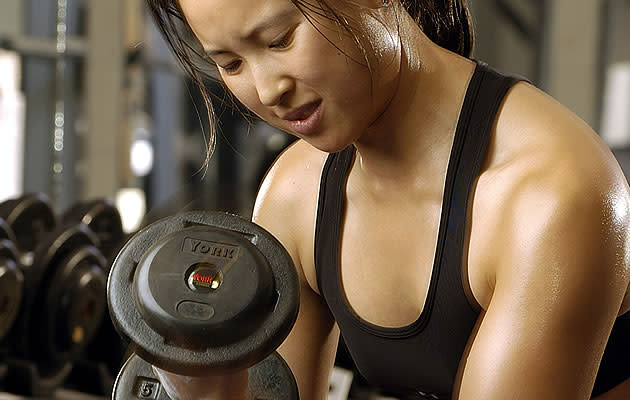 Fit to Post Health
Fit to Post HealthFour tips to strengthen your shoulders

Shoulder pain is one of the most common problems I see during health consultations.
Most of the time the client tells me, "Oh it's been diagnosed as... tendinitis, rotator cuff tears, impingement" and so on.
The problem is, that the symptoms of shoulder pain feel "about the same" no matter which part of the shoulder is damaged. It is very hard to tell what the cause of the problem is just by description of the symptoms.
The cause of shoulder pain is "multi-multi-multi factorial". The reason for this, is that the shoulder has 24 attachments and components that affect its function. Any one of these, or a combination of them can affect shoulder function and cause pain.
So, today we are going to cover 3 tips that can greatly reduce your risks of shoulder pain and if done progressively even if you are injured, they should improve some of your symptoms.
As usual, never push into sharp pain, or dull pain that does not go away in a few seconds. Below, one of the Genesis Gym instructors, Cheryl (who also took 2nd place in this years Singapore's Strongest Woman challenge) will demonstrate the exercises.
Tip 1: Improve your posture.
If you slouch or hunch, your shoulders (and everything else) are in a mechanically weaker state and more injure prone position. I wrote about how you can improve posture here.
Tip 2: Train the muscles that pull your shoulder blades back, and down.
Most of us, due to common activities like computer use, driving, and poor breathing habits will tend to have what is called "over active" muscles near our necks which put our shoulder blades into a weakened position.
One of the best exercises for this is shown below.
Instructions:
Start with your head on your forearm, and the weight by your side.
Shrug your shoulder blade back and down
Raise the weight into a "Y" shape. Not straight ahead, and not out like a "T". The "Y" is the most difficult angle to move in and its the one that needs the most training.
Lower the weight under control for 4-5 seconds
You should feel the exercise in the middle of your back. That is where the muscles you want to train are (the lower trapezius muscles) If you don't feel it, lower the weight, and try again. There is no point doing this if you don't feel the muscle.
Tip 3: Train the muscles that rotate the shoulder.
These muscles taken together are called the "external rotators" of the shoulder, and are commonly very weak in many people.
Their injury prevention function is in decelerating your arm movements, and stabilising your shoulder joint.
Because of the many angles that your shoulder can function in, there are hundreds of variations of this exercise using different positions and training equipment. Here is a simple one that almost anybody can do.
Instructions
Rest your elbow on something just below shoulder height. This is important because you don't want to use strength to lift your arm.
Keep your elbow at 90 degrees, and lower the weight as far as you can without your shoulder rounding. Lower in 4-5 seconds
Bring the weight up by rotating your upper arm. You should not feel tired in your shoulder muscles, but rather in the small muscles behind your shoulder. In fact you should feel the exercise very much near your armpit. These are the small muscles we are trying to train here.
Tip 4: Train your biceps.
"Why the biceps?" many people ask when I tell them that this is an important exercise.
The reason is that part of the biceps muscle called the "long head" actually ends up INSIDE the shoulder joint and connects to the tissue inside of the joint. This makes it a very important stabilizing muscle for the shoulder.
When I test people with shoulder issues, the long head of the biceps is a common problem that needs to be addressed.
To train the long head of your biceps, you will need a place to recline. Either a bench, or a gym ball should be ok.
Instructions
Start with the arms straight and the elbows BEHIND your body.
Start to curl the weights using your biceps, do not move your elbows at all.
Once the forearms pass parallel with the floor, you can move your elbows a little forward to finish the exercise.
Lower under control, reversing the movement, in 4-5 seconds.
There we have it, do each exercise for four sets, with a load that is challenging for 10-12 reps to start off with. Your shoulder will be glad you did!
For the best fitness boot camp program, ExpressFIT program in the CBD, and personal training in Singapore visit www.genesisgym.com.sg or the Genesis Gym facebook page. Or visit Coach Jonathan's homepage and blog at www.coachjon.com







